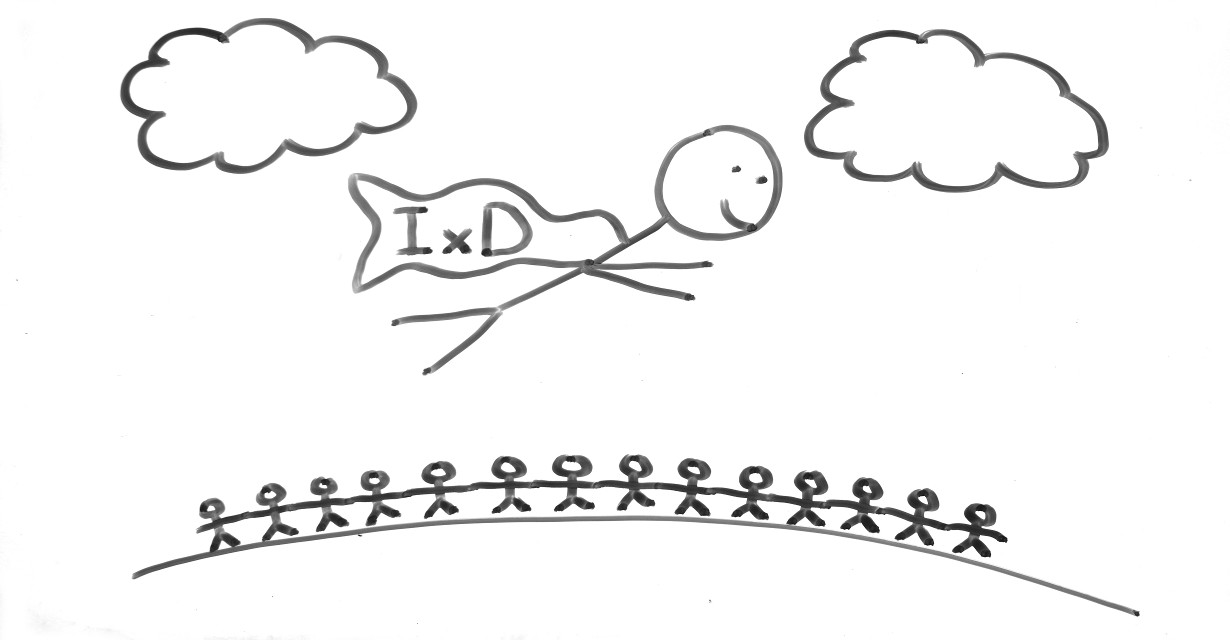
At reelyActive, we’ve often poked fun at the smart device (see our previous blog post). It allows us to do amazing things like communicate and share voice, images, videos and data across the globe. You could easily argue that it makes us superhuman communicators. But when you see someone standing frozen in the middle of a busy street, awkwardly buried in their smart device, oblivious to the “meatspace” in which they live, these superpowers are just as easily questioned.
Enter Interaction Design, or IxD, which is about “shaping digital things for people’s use” (thanks Wikipedia). A few months ago, we discovered a great documentary called Connecting, which explores the future of this field. Astute viewers will recognize from the font that this is a Microsoft ‘n pals endeavour, hence the exclusion of some other devices you might expect. Regardless, it’s totally worth 18 minutes of your time.
The Internet of Things features prominently (7:40), with Jonas Löwgren of Malmö University presenting the value of “more of the physical world connected with the digital world”. In other words, the IoT provides our digital world with context about what is really physically happening. And context allows for adaptation and better decision making. He sees the IoT as 5-7 years out.
It goes beyond Things. Andrei Herasimchuk of Twitter explains (11:53) how “people are now actually entering their lives into a digital format”. You could argue that humans are akin to complex sensors of the IoT, representing their experiences online. Twitter is the perfect example for real-time and historical thoughts. He feels, as do many, that we’ll be able to do exciting things in the future with those digital representations.
How does IxD help us become superhuman? In the video, you’ll see people interacting with far more than smart devices. Screens are everywhere. Gestures are recognized. Ambient information is presented to humans to provide context, and to allow for adaptation and better decision making. The physical-digital connection works both ways. Remember our friend frozen in the middle of the street? Amalgamated digital and physical context would allow him to receive the appropriate information at the appropriate time via the most appropriate channel. In other words, likely not on a 4″ screen in the middle of traffic.
But it’s not just about superhuman powers. Blaise Aguera y Arcas goes further to say (15:00) that as a by-product of this intense connectivity, “there’s a superorganism building up in which humans are no longer at the top of the food chain”. Depending on who controls the data and with what intent (see Big Brother and the Identity of Things), this may be a scary thought. But with an open IoT, just like the open Internet before it, this superorganism could instead become the most beautiful evolution of humanity. It’s an exciting time to connect the physical and the digital world.
Comments
3 responses to “Interaction Design, the Superhuman and the Superorganism”
[…] can establish trust. Only then can we experience interactions that make us feel not just human, but super-human. This entry was posted in bloggyActive on 19 09 13 by […]
LikeLike
[…] real world. It’s not the first time we’ve used that word, case in point our 2013 post IxD, the Superhuman and the Superorganism. Only recently, however, has the “how” come into focus, and we now see […]
LikeLike
[…] of ourselves figuratively, if not yet literally. Nor is it difficult to argue that today we still adapt ourselves to interact through our technology rather than the other way […]
LikeLike